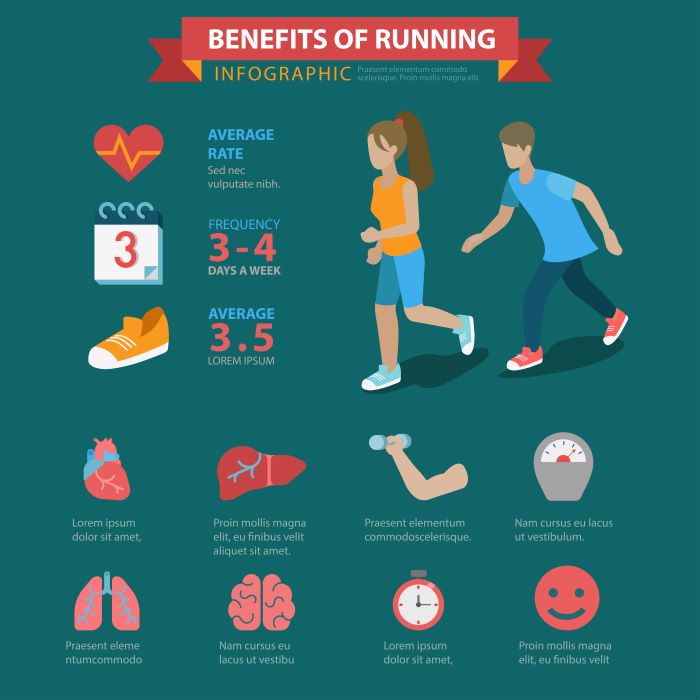Embarking on a half marathon journey requires a solid understanding of the training basics to ensure a successful and enjoyable experience. The half marathon, measuring 13.1 miles, is a significant step up from shorter races, demanding not only physical endurance but also mental resilience.
To start, it’s essential to establish a structured training plan. Most plans span 10 to 14 weeks and typically include the following key components:
- Long Runs: These are pivotal to gradually build your endurance, allowing you to cover greater distances comfortably.
- Speed Work: Incorporating intervals or tempo runs can enhance your pace and overall performance.
- Rest Days: Equally important, rest helps prevent injury and allows your body to recover and adapt.
Nutrition also plays a crucial role in your training. A well-rounded half marathon training and nutrition plan should focus on a balanced diet rich in carbohydrates, proteins, and healthy fats, fueling your body for the challenges ahead. Hydration is equally vital, so don’t forget to drink plenty of water, especially during your long runs.
Understanding these fundamentals will set the groundwork for a successful race day. If you’re eager to dive deeper into specific training techniques and nutrition strategies, visit our website to learn more and get started today! Click here.
Key Nutrition Strategies for Endurance Runners

Nutrition plays a pivotal role in the performance of endurance runners, particularly when preparing for a half marathon. To fuel your body effectively, it’s essential to adopt key nutrition strategies that support your training and enhance recovery.
Firstly, carbohydrate loading is crucial. Carbohydrates serve as the primary energy source during long runs, so aim to consume complex carbs like whole grains, fruits, and vegetables. Incorporating these into your meals will help build glycogen stores, which are vital for endurance.
Secondly, protein intake should not be overlooked. Consuming adequate protein aids in muscle repair and recovery after your runs. Incorporate lean meats, dairy, legumes, and plant-based protein sources into your diet to meet your body’s needs.
Another important aspect is hydration. Staying hydrated before, during, and after your runs is essential for optimal performance. Water is crucial, but during long runs, consider electrolyte drinks to replenish lost minerals. Aim to drink at least 500ml of water a few hours before your run and continue to hydrate throughout the day.
Lastly, pay attention to timing your meals. Eating a balanced meal rich in carbs and protein about 2-3 hours before your run can significantly improve your performance. Post-run, a snack that combines both carbs and protein within 30 minutes can enhance recovery.
By implementing these nutrition strategies, you can ensure that your body is well-prepared to tackle the challenges of endurance running, helping you perform at your best during your half marathon.
Developing a Customized Training Schedule

Creating a tailored training schedule is key to successfully preparing for a half marathon. A customized training plan not only aligns with your personal fitness level but also accommodates your goals, lifestyle, and time constraints.
Begin by assessing your current fitness level. Consider factors such as your running experience, mileage, and how often you currently run. This information will help you determine a starting point and set realistic goals.
Next, incorporate a mix of training runs. Your schedule should include:
- Long runs: These are essential for building endurance. Gradually increase your long run distance each week, aiming for a peak distance of about 10-12 miles before tapering off.
- Speed work: Include intervals or tempo runs to improve your pace. These sessions should be shorter but more intense, helping you build strength and speed.
- Recovery runs: These should be easy-paced runs that allow your body to recover while still maintaining mileage.
Additionally, don’t forget to include cross-training and rest days in your schedule. Activities such as cycling, swimming, or strength training can enhance overall fitness and reduce the risk of injury. Aim for at least one rest day per week to allow your body to recover.
It’s also important to periodically reassess and adjust your training plan. Listen to your body and make changes based on your progress and how you feel. This adaptability will lead to a more successful training experience.
By developing a customized training schedule that fits your needs, you’ll be well on your way to achieving your half marathon goals.
Essential Gear for Half Marathon Success

Equipping yourself with the right gear is crucial for a successful half marathon experience. The right equipment not only enhances your performance but also ensures comfort and reduces the risk of injury during training and on race day.
First and foremost, invest in a quality pair of running shoes. Your shoes should provide adequate support, cushioning, and fit well to your foot type. It’s advisable to visit a specialty running store for a fitting to find the best shoe for your biomechanics.
Next, consider the importance of moisture-wicking clothing. Opt for breathable fabrics that help keep sweat away from your body, thereby regulating your temperature and preventing chafing. Essential clothing items include:
- Running tops: Look for short or long sleeve options that are lightweight and comfortable.
- Running shorts or tights: Choose styles that allow for a full range of motion, and consider those with pockets for storing essentials.
- Sports bras: For female runners, a high-support sports bra is vital for comfort and stability.
Don’t overlook accessories such as a running watch or fitness tracker. These devices can help you monitor your pace, distance, and heart rate, providing valuable data to enhance your training. Additionally, consider a hydration system, like a handheld bottle or a hydration pack, to ensure you stay hydrated during long runs.
Lastly, be prepared for varying weather conditions. Invest in a lightweight, waterproof jacket for rainy days or arm sleeves for cooler temperatures. Having the right gear tailored to your needs will make your half marathon training and race day experience much more enjoyable.
Tips for Staying Motivated During Training
Maintaining motivation throughout your half marathon training can be challenging, but with the right strategies, you can keep your spirits high and your focus sharp. Here are some effective tips to help you stay committed to your training plan.
Set realistic goals that are specific, measurable, achievable, relevant, and time-bound (SMART). Break your half marathon training into smaller milestones, such as completing a certain distance or improving your pace. Celebrating these achievements can provide a sense of accomplishment that fuels your motivation.
Another key strategy is to mix up your training routine. Incorporate different types of runs, such as speed work, long runs, and recovery runs, along with cross-training activities like cycling or swimming. This variety not only keeps your training fresh but also helps prevent burnout and overuse injuries.
Joining a running community can significantly enhance your motivation. Whether it’s a local running club or an online group, surrounding yourself with like-minded individuals who share your passion for running can provide encouragement and accountability. Don’t hesitate to share your goals and progress with others!
Additionally, consider adopting a positive mindset. Visualize your success on race day and remind yourself why you started this journey. Keeping a training journal can be helpful for tracking your progress and reflecting on your experiences, which can reinforce your commitment to your goals.
Finally, ensure you reward yourself for your hard work. Treat yourself to new gear, a massage, or a fun outing after reaching a training milestone. These rewards can serve as motivation to push through more challenging days.
Post-Race Recovery and Nutrition Essentials

Completing a half marathon is a significant achievement, and how you recover afterward is just as important as your training. Focusing on post-race recovery and nutrition essentials can greatly enhance your body’s healing process and prepare you for future runs.
First and foremost, rehydration is crucial. After crossing the finish line, your body loses a considerable amount of fluids through sweat. Replenishing these fluids should be your top priority. Water is essential, but consider an electrolyte drink to restore lost minerals and maintain optimal hydration levels.
Next, nutrition plays a vital role in recovery. Within 30 to 60 minutes post-race, aim to consume a balanced meal or snack rich in carbohydrates and protein. This combination will help to replenish glycogen stores and repair muscle tissue. Some great options include:
- Greek yogurt with fruit
- A smoothie with spinach, banana, and protein powder
- Whole grain toast with avocado and eggs
Additionally, rest and sleep are essential components of recovery. Your body needs time to heal, so ensure you get plenty of sleep in the days following the race. Consider light activities, such as walking or gentle stretching, to promote circulation without putting too much strain on your muscles.
Incorporating active recovery techniques can also be beneficial. Gentle yoga or foam rolling can help alleviate soreness and improve flexibility. Listen to your body during this period and allow yourself to relax and recharge.
To streamline your post-race journey, visit our website to learn more and get started today! Discover additional tips for enhancing your recovery and maintaining your newfound fitness in the long run. Click here.


